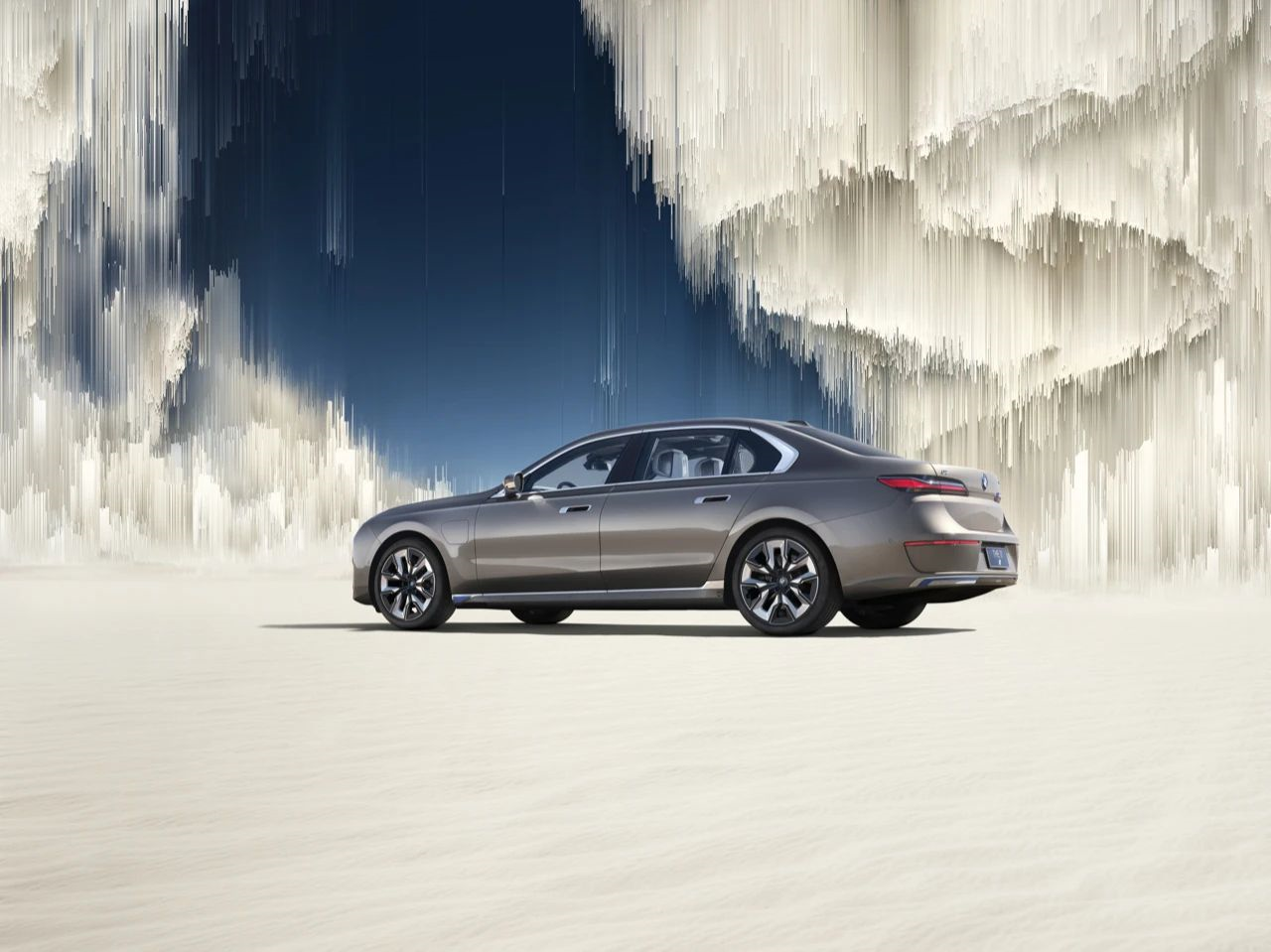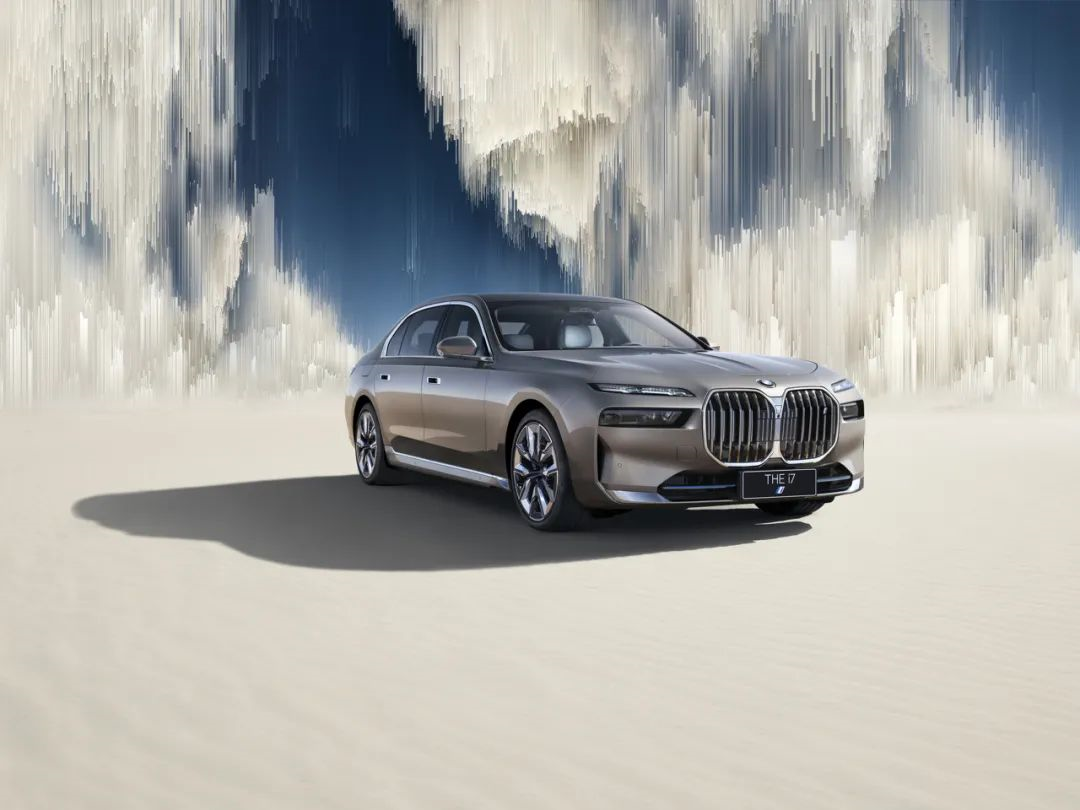Author: Xuan Wang
In the era of traditional fossil fuel cars, the core standard for classifying various models into different levels is horsepower. Just like the flagship sedan of BBA will launch a model equipped with a 12-cylinder engine, the 12-cylinder engine is the pearl of the car industry and is an industrial product with an absolute barrier to development. Because only a few people master the core technology, models equipped with such engines must be luxurious flagships.
In the era of electrification, the reason why we are troubled by the question of “how to make electric cars feel luxurious” is that we have lost the definitive judgment standard. Therefore, luxury brands need to set the tone for electric flagship cars at the beginning of the new era. Take the innovative pure electric BMW i7 that was recently launched as an example. The reason why it can be regarded as the “new electric flagship” is that BMW recognizes that the driving force of car evolution today is no longer “horsepower” but “digital power”. Digital capabilities are the key to evaluating flagships.

Digital Power Drives Horsepower
Indeed, electrification has made power cheap. However, how to avoid the output of excessive power and allow drivers to experience ease and flexibility is a subject that luxury electric vehicles should further explore.
The innovative pure electric BMW i7 has applied the fifth-generation BMW eDrive electric drive system. Even if the curb weight of the i7 xDrive60L model reaches an astonishing 2.7 tons, the power reserve of 400 kW and 745 Newton meters can also make its hundred kilometers acceleration time 4.7 seconds.
At the same time, users can be more relaxed when allocating power. The model equipped with the M Sports package also first applies the Sport Boost mode. The driver can experience a 10-second super acceleration by flipping the left shift paddle.

Compared with traditional fossil fuel cars, electric cars can achieve both performance and economy. An efficient power system can achieve a low power consumption of 17.9 kWh per hundred kilometers. The i7 xDrive60L model equipped with a 101.7 kWh battery pack can have a maximum cruising range of 650 kilometers under the CLTC standard. It is not difficult to see that the combination of digitization and electrification can give the power system higher tolerance, and both efficiency and performance can achieve the ultimate.
Innovations in the all-electric BMW i7 include not only the electric drive system, but also the highly advanced Magic Carpet intelligent air suspension system.
Traditional air suspension systems work reactively, only engaging and handling road vibrations when the shock absorber is compressed. However, the intelligent air suspension system, combined with the vehicle’s front camera, provides the chassis system with a pair of eyes to anticipate and pre-adjust the suspension data based on the road surface information collected in advance.
In addition to optimizing the longitudinal shock absorption performance, the Magic Carpet intelligent air suspension of the BMW i7 further improves lateral support, and its most significant feature is the active comfort anti-roll function, which can adjust the height of the vehicle’s body on one side. The suspension system is also equipped with an electronic anti-roll bar, which flexibly adjusts the body vibrations caused by wheel bouncing.
Luxury flagship models have long relied solely on mechanical structures, limiting the scope of their advancements. Engineers have been actively searching for new ways to deliver comfortable driving experiences, and the active chassis comfort system represents a significant step forward for the automobile industry. The sustainable driving experience is now a flagship feature of the all-electric BMW i7.
In contrast to the more low-key styling of previous 7 Series models, the all-electric BMW i7 exudes a striking luxury from the moment you settle into the cabin. This impression is created by BMW’s wraparound interactive light strip, which draws the viewer’s attention immediately upon entering.
A new experience from every corner of the cabin

The highlight of the new car is that BMW innovatively breaks the traditional atmosphere light as a decorative attribute, and integrates the functions of interactive media and information output, providing user interface and digital display. Following the principle of “Shy Tech” invisible technology, the touch buttons are hidden in the atmosphere light group to ensure the integrity of visual experience as much as possible without losing practicality.
Based on this set of lighting system, BMW has launched a new theme mode. On the basis of three modes of personality, sport, and energy saving, four modes have been added: “Comfort mode”, “Dynamic mode”, “Digital Art mode”, and “Cinema mode”. Combined with the lighting effects to enhance the sensory experience of users, the experience of the theme mode is taken to the next level.
In terms of interaction, the innovative pure electric BMW i7 continues to use the eighth-generation operating system BMW iDrive, and retains physical interaction media as much as possible. In line with the people-oriented design concept, the existence of physical buttons makes it more convenient for users to operate blind interactions while driving.
The core interactive hardware of the innovative pure electric BMW i7 is an integrated suspended curved surface screen, with a 12.3-inch dashboard and a 14.9-inch touch central display screen. As an electric flagship, the innovative pure electric BMW i7 has three levels of improvement in interaction experience. The first level is the quality of image display. The display screen has a graphic resolution of 200 ppi (pixels per inch) and can present rich and delicate light and shadow effects. The frameless design also has a sense of luxury.
In order to support the smooth experience of the new generation of in-vehicle systems, the data computing and graphic processing capabilities of the vehicle have been greatly upgraded. The central processor serves as the computing core of the new in-vehicle system, with a 100% performance increase and a smoother computing speed, while the graphics processor has a performance increase of up to 500%, bringing better graphic quality and higher rendering efficiency.
The rich in-vehicle ecosystem also provides more entertaining content. When the vehicle speed is less than 5 kilometers per hour or in a parking state, the driver can watch long video streaming in the front row.The second improvement is in the innovative all-electric BMW i7, which features AR real-time navigation and is applied for the first time on both the instrument panel and the central control screen. With the lane-level guidance information, road display, image intelligent detection and recognition capabilities, as well as AR fusion algorithm capability, the “big arrow” suspended on the road combines virtual and real objects.
The third improvement is the brand new BMW intelligent personal assistant with a humanoid “double-eye” design and six emotional visual presentations, bringing users a more emotional interactive experience. In addition, the new BMW intelligent personal assistant supports the front and rear seat wake-up function and adds multiple features, including door opening and closing and activating designated seat massage.
In the innovative all-electric BMW i7, BMW has indeed mastered the methods of shaping a luxurious and intelligent cockpit. The above three details represent the three elements that enhance the interaction, convenience of information acquisition and emotional interaction of the smart cockpit.
Rear entertainment systems in luxury flagship cars are not new things. Some early 21st century models were already equipped with headrest televisions. However, after 20 years, we have not yet found a good solution to separate the rear entertainment system from the redundant features. Traditional rear entertainment screens have three disadvantages: 1. the screen is too small, and luxury cars already focus on rear space, leaving not enough room for the passenger’s legs, and the distance between people and the rear entertainment screens is too far, making it difficult to watch; 2. the display quality is too low, to the extent that the rear entertainment screen has become the configuration which is least consistent with the value of luxury cars; 3. the content is poor, early luxury cars came with wired TV functions for rear entertainment screens, limited by signal issues, many later cars switched to using mobile screen casting functions instead of wired signals, but there is still no video source that is perfectly matched with the in-car scene.
The innovative all-electric BMW i7 is the first to have a brand new rear entertainment system that solves the above problems very well. Among them, the BMW suspended screen is ingeniously integrated at the top of the car’s interior, narrowing the distance between the rear passengers and the screen. It has a 31-inch ultra-wide 8K resolution and supports 32:9 panoramic playback mode.
Executive-class cars should pay more attention to the back-seat passengers’ experience, and the innovative rear entertainment system of the pure electric BMW i7 undoubtedly ranks among the top in terms of display quality. At the same time, the system is integrated with a rich localized application ecology, which shows that BMW is opening up its thinking in intelligence and aligning with the needs of Chinese users.
Summary
From “Horsepower” to “Digitalpower”, the innovative pure electric i7 may lack some mechanical charm compared with its predecessors, but the luxury flagship of the next era will inevitably be a product oriented towards experience. The innovative pure electric i7 is a car that is penetrated by digital concepts in every functional detail. It not only consolidates its position as a pure electric flagship, but also brings a comprehensive subversion to the driving experience.

This article is a translation by ChatGPT of a Chinese report from 42HOW. If you have any questions about it, please email bd@42how.com.
